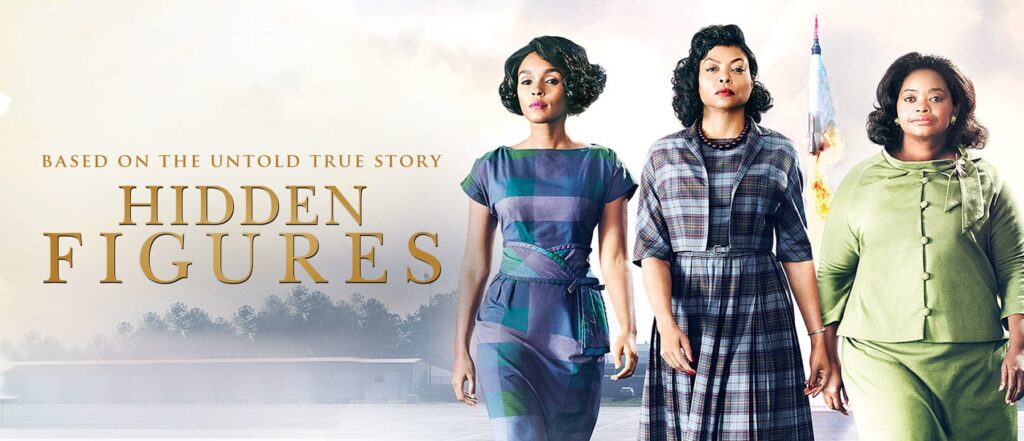Lights, Camera, Equality: Unveiling the Bechdel Test
The Bechdel test, named after cartoonist Alison Bechdel, is a widely recognized metric used to assess gender representation in films and other media. The Bechdel Test originated from Bechdel’s comic strip in 1985 and has since sparked important discussions about the underrepresentation of women in media narratives. However, the test is not without its share of criticisms and limitations. Some argue that passing the test does not guarantee the presence of well-developed female characters or overall gender equality in a film. Furthermore, the Bechdel Test does not consider other aspects of intersectional representation, such as race, ethnicity, and LGBTQ+ identities. Nevertheless, the Bechdel Test remains a starting point for examining gender bias in media and promoting conversations about the need for diverse and authentic portrayals of women.
Criteria of the Bechdel Test:
- The work must have at least two named female characters.
- These female characters must have a conversation with each other.
- The conversation between the female characters should be about something other than a man.

From Celluloid to Streaming: The Bechdel Test’s Journey through Time
Since its introduction in 1985, the Bechdel Test has undergone significant evolution in response to changing societal perspectives and the growing awareness of gender representation in media. Initially conceived as a tongue-in-cheek comic strip commentary, the test has gained widespread recognition and become a catalyst for discussions surrounding female representation. Over the years, the Bechdel Test has expanded beyond its original three criteria to include variations and adaptations that consider intersectionality and diverse experiences. Additionally, the test has inspired related tests and frameworks that evaluate representation from different angles. The evolution of the Bechdel Test reflects the ongoing commitment to raising awareness and pushing for greater gender equality in storytelling, reminding us of the progress made while also highlighting the continued need for improvement in media narratives.
Behind the Scenes: Crunching Numbers on Bechdel Test Results
Delving into the statistical data and studies on films and media that pass or fail the Bechdel Test provides valuable insights into the state of female representation in popular culture. Analyzing the numbers reveals both the progress made and the persistent gaps that exist. Studies have shown that a significant number of films, especially those from major studios, fail to meet the criteria of the Bechdel Test. These findings highlight the prevalence of gender imbalances in storytelling, where women often play peripheral roles or are overshadowed by male characters.
However, the data also showcases the positive impact of the Bechdel Test as an advocacy tool. Over the years, the increasing awareness of the test has led to a rise in the number of films that consciously strive to pass, resulting in a greater representation of female characters and more meaningful interactions among women on screen. Crunching the numbers on Bechdel Test results sheds light on the current landscape of female representation in media and underscores the importance of ongoing efforts to promote gender equality in storytelling.
Unveiling the Truth: Bechdel Test Results and Female Representation
Examining the correlation between Bechdel Test results and female representation in media reveals important insights into the broader issue of gender equality in storytelling. Studies and analyses have shown a positive association between passing The Bechdel Test and female empowerment in media and the presence of more diverse and nuanced female characters on screen. Films that pass the test tend to feature women who are not solely defined by their relationships with men but rather have their own goals, agency, and independent storylines. Furthermore, these films often depict meaningful interactions and relationships among female characters, highlighting the depth and complexity of women’s experiences. By exploring the relationship between Bechdel Test results and female representation, we gain a deeper understanding of the ways in which media can challenge gender stereotypes, promote inclusivity, and empower women by providing them with more authentic and representative narratives.
The Bechdel Test as a Measure of Gender Equality
The Bechdel Test serves as a measure of gender equality in storytelling, highlighting the representation and treatment of women in films and media. Passing the Bechdel Test is indicative of a narrative that prioritizes women’s perspectives and agency, thereby challenging gender biases and promoting equality. It reveals the extent to which female characters are granted meaningful roles and interactions, rather than serving as mere accessories or plot devices. However, the Bechdel Test also sheds light on the prevailing gender bias in Hollywood and the wider entertainment industry.
Studies have consistently shown a lack of female representation, both in terms of the number of female characters and their depth of characterization, which reflects systemic inequalities and societal norms. The Bechdel Test invites critical reflection on the industry’s tendencies to prioritize male-centric narratives and provides a tool for advocacy and progress toward a more inclusive and equitable media landscape. By analyzing the link between passing the Bechdel Test and gender equality in storytelling, we gain valuable insights into the need for continued efforts to challenge and dismantle gender biases.
Sheroes on Screen: The Bechdel Test’s Role in Shaping Diverse Female Characters
The Bechdel Test plays a significant role in promoting the creation of diverse and multifaceted female characters in media. By setting the criteria that female characters must have conversations with each other about topics other than men, the test encourages writers, directors, and filmmakers to craft narratives that go beyond one-dimensional female stereotypes. It prompts the development of female characters with their own goals, aspirations, and complexities, paving the way for the emergence of sheroes on screen. The Bechdel Test challenges the notion that women exist solely in relation to men and pushes for stories that celebrate the diversity of women’s experiences, identities, and relationships. By highlighting the significance of the Bechdel Test in shaping diverse female characters, we recognize its role in expanding the range of narratives and empowering audiences with portrayals that resonate with the lived realities of women.
Beyond Pass or Fail: Bechdel Test’s Impact on Inclusive Storytelling
While the Bechdel Test has been instrumental in drawing attention to female representation in media, it is essential to recognize its limitations and the need for additional metrics to assess inclusive storytelling. The test’s focus on binary gender interactions and conversations about topics other than men overlooks the complexities of intersectionality and diverse experiences. To address these shortcomings, other tests and frameworks have emerged that complement or expand upon the Bechdel Test. For instance, the Mako Mori Test examines the presence of well-developed female characters with their own story arcs, independent of supporting male characters.
The DuVernay Test assesses the representation of underrepresented communities, including people of color. These supplementary tests and frameworks contribute to a more comprehensive understanding of inclusive storytelling, acknowledging the importance of diverse perspectives and intersectional identities. By moving beyond the pass-or-fail mentality of the Bechdel Test, we can foster richer and more authentic narratives that better reflect the diverse world we live in.
Breaking Barriers: Embracing Intersectionality in Female Representation
In the pursuit of authentic and inclusive female representation, it is crucial to explore and embrace intersectionality. Intersectionality recognizes that individuals hold multiple social identities that intersect and interact, such as race, ethnicity, gender, sexuality, ability, and more. By acknowledging and understanding these intersecting identities, we can ensure that female representation in media reflects the complexity and diversity of women’s experiences. Intersectionality challenges the one-size-fits-all approach and emphasizes the importance of including and amplifying voices that have historically been marginalized or overlooked.
It calls for the representation of women from all walks of life, providing a platform for stories that celebrate the richness and uniqueness of each individual’s intersectional identity. Embracing intersectionality in female representation not only breaks down barriers but also fosters a more inclusive and equitable media landscape that resonates with audiences and creates a sense of belonging for all.
Reel Success: Celebrating Films and Media that Ace Female Representation
While challenges persist in achieving gender equality in media, there are notable success stories that demonstrate the power of exceptional female representation. These films and media productions go beyond the Bechdel Test, presenting diverse and empowering portrayals of women. Movies like “Wonder Woman” and “Black Panther” showcase strong, multidimensional female characters who challenge stereotypes and lead their narratives with agency and strength. Television shows such as “Killing Eve” and “Pose” explore complex female relationships, representing a range of experiences and identities. Documentaries like “RBG” and “Hidden Figures” highlight the accomplishments of remarkable women in real-life settings.
Examples of films and media that pass the Bechdel Test:
- “Wonder Woman”
- “Black Panther”
- “Killing Eve”
- “Pose”
- “RBG”
- “Hidden Figures”
- “Little Women” (2019)
- “Mad Max: Fury Road” (2015)
- “Bridesmaids” (2011)
- “Frozen” (2013)
- “Lady Bird” (2017)
- “Thelma & Louise” (1991)
- “The Shape of Water” (2017)

A Silver Lining: Positive Changes Driven by the Bechdel Test
The Bechdel Test has played a significant role in driving positive changes within the entertainment industry. It has sparked crucial conversations about female representation and the need for more diverse and authentic storytelling. As a result, many filmmakers and creators have become more conscious of gender imbalances and have actively worked to address them. The Bechdel Test has encouraged the development of narratives that prioritize female characters and their relationships with one another, leading to the emergence of powerful and complex female protagonists.
It has also paved the way for increased representation of underrepresented communities and intersectional identities, as creators recognize the importance of telling stories that reflect the diverse experiences of women. The Bechdel Test has become a catalyst for change, prompting the industry to challenge traditional norms and strive for greater inclusivity, ultimately enriching the landscape of female representation in films and media.
Lights, Camera, Progress! Addressing Challenges in Female Representation
While significant strides have been made in the realm of female representation, there are still ongoing challenges that demand our attention. One such challenge is the persistence of gender stereotypes and limited opportunities for women behind the camera, including in directing and producing roles. Additionally, the underrepresentation of women of color, LGBTQ+ individuals, and those with disabilities remains a critical issue that requires addressing. However, there is cause for optimism as the industry takes steps toward further improvement.
Initiatives promoting gender parity, such as the 50/50 by 2020 campaign and inclusion riders, have gained momentum and fostered more inclusive practices. Filmmakers, activists, and audiences continue to advocate for authentic and multifaceted female characters. They push for narratives that defy stereotypes and amplify marginalized voices. By addressing these challenges head-on and fostering a culture of inclusivity and equal opportunity, we can create a more vibrant and representative film and media landscape for all.
Join the movement for inclusive media by supporting and demanding diverse and authentic female representation on and off the screen.
The Bechdel Test has undeniably made a lasting impact on the conversation surrounding female representation in films and media. While it has its limitations, the test has served as a catalyst for change. It pushed the industry to reflect on its gender biases and strive for more diverse and authentic storytelling. It has shed light on the underrepresentation of women and prompted critical discussions about intersectionality. And also inspired the introduction of other tests and frameworks that complement its goals. As we continue to break barriers, embrace intersectionality, and celebrate success stories, we must also address ongoing challenges and work towards further progress.
By championing inclusive representation, and supporting underrepresented voices, we can create a future where female characters are more than just tropes, but rather fully realized individuals whose stories resonate with audiences from all walks of life. Lights, camera, equality. Let us continue to champion the importance of female representation and shape a truly inclusive and empowering media landscape.

